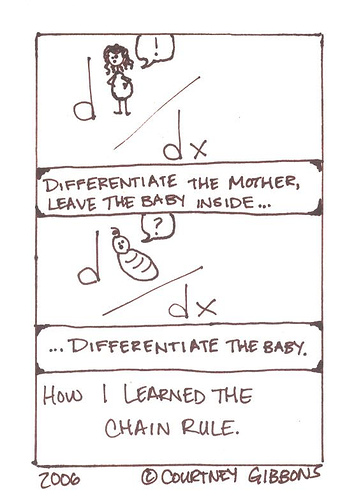I have an odd love for the unit circle. I bet most math teachers do. I had a professor in graduate school who said, "There's nothing left to be discovered in the area of trigonometry. Just draw the damn unit circle and you're done." I think that's why I love it so much. There's so much information you can gather from such a simple representation.
This year in PreCalc, my team and I actually started the year with trigonometry. So, the kids were introduced to the unit circle on the second or third day of school, I believe (I know...this post is like five months late). Since we use the unit circle so much, I really wanted to give the kids a visual understanding of where all the ordered pairs come from. So, in addition to giving them blank unit circles to fill out, I also gave them three triangles that fit onto their circles:
 |
This is, obviously, completely blank, but the kids' triangles' sides
were all labeled (both on the front and back). |
Here are the unit circles (I stole this off the Internet sometime ago...let me know if they're yours!).
And here are the three triangles that I created; each hypotenuse should be the same length as the radius of the circles in the previous document:
Using what they remembered from geometry and given that each hypotenuse has a length of 1, the students labeled the remaining sides of the triangles (on both sides of the paper). Then, they placed the triangle that fit on each coordinate and the x- and y- coordinates were (hopefully) clear to see.
I had the students tape both their completed circle and their three triangles to the very front of their composition notebooks.
*****
Another activity that we did, which I adapted from an article in Mathematics Teacher, was I created a huge "human unit circle." I bought a cheap plastic tablecloth and drew a circle on it, but there are lots of ways to make one. Then, I made cards for each coordinate on the circle. I printed this twice on two separate colors: one for x-values and one for y-values:
I had half the kids pick up a green card (x-value) and half the kids pick up a yellow card (y-value). Then, I asked them to find a student who had the other part of their ordered pair (we discussed how for most of the cards there were two options). Once they found their partner, I asked them to place their ordered pair on the correct location on the unit circle:
Once they finished placing their cards, I picked up random ordered pairs and had them give me the corresponding angle, in both degree and radian measure.
I thought the kids did really well with the unit circle this year. Now the trick is to keep practicing it with them even though we're done with our trig units... :)





